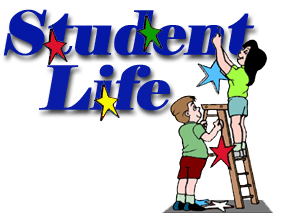g
The Discussion Board (DB) is part of the core of online learning. Classroom discussion in an online environment requires the active participation of students and the instructor to create robust interaction and dialogue. Every student is expected to create an original response to the open-ended DB question as well as engage in dialogue by responding to posts created by others throughout the week. At the end of each unit, DB participation will be assessed based on both level of engagement and the quality of the contribution to the discussion.
At a minimum, each student will be expected to post an original and thoughtful response to the DB question and contribute to the weekly dialogue by responding to at least two other posts from students. The first contribution must be posted before midnight (Central Time) on Wednesday of each week. Two additional responses are required after Wednesday of each week. Students are highly encouraged to engage on the Discussion Board early and often, as that is the primary way the university tracks class attendance and participation.
The purpose of the Discussion Board is to allow students to learn through sharing ideas and experiences as they relate to course content and the DB question. Because it is not possible to engage in two-way dialogue after a conversation has ended, no posts to the DB will be accepted after the end of each unit.
A. Questions for weekly discussions and conversations (not part of the required Discussion Board assignment)
These questions can serve as the starting point for your discussions during the week. They are “thought starters,” so that you can explore some ideas associated with the discussion board and unit topics. Answers are not required, and should not be submitted with your required assignment. Answers are not graded.
1. How did you gain an awareness and understanding of art forms?
2. What are your impressions of what constitutes a work of art?
B. Required Discussion Board assignment.
- For this assignment, you will take on the role of an investigative journalist by using the Internet to seek out different kinds of artworks including art that is not conventionally considered to be art. Your search begins by looking for ideas in the Classroom Materials, your instructor’s assignment notes, and the Library’s Guides to Library Resources for this class. Works of art currently, or traditionally found in museums should be excluded from your examples.
- Choose two specific works of art (not general forms of art) that will make for a captivating news article.
- Using the art terminology and concepts outlined in the textbook and supplement reading to describe and evaluate each artwork chosen by answering the following questions. Apply your own critical thinking to completely describe the works and put them in context for the reader.
- Elaborate on the details in your own words. Consider including a headline to grab your reader’s attention, and be sure to include a clearly labeled URL (Web link) to the image.
What is the FORM of the work?
- Is it a two-dimensional or three-dimensional work of art?
- What materials are used?
- What techniques or processes are used to create the artwork?
- What colors are used?
- Describe the use of line, shape, texture, value, color, and balance.
Does the work of art have SUBJECT MATTER?
- If so, what is literally depicted?
- Is the work of art REPRESENTATIONAL, ABSTRACT, or NONOBJECTIVE?
What is the CONTENT?
- What does it mean or represent?
- What is the artist’s message?
- Is symbolism used? If so, what is the meaning?
- What is the context of the artwork?
- What is the function of the artwork?
- What traditional role of the artist is exemplified?
Peer responses can elaborate on the following topics:
- Look at the images that your peer has selected. Discuss the meaning of the work: Do you think he or she interpreted the artist’s message well? What do you think the artist trying to say?
- What artist(s) or style do you think the artist uses for inspiration?
- Look at other works of art by the same artist. Which one would you have picked and why?
- Use your critical thinking to post substantive responses.
In your own words, please post a response to the Discussion Board and comment on other postings. You will be graded on the quality of your postings.
For assistance with your assignment, please use your text, Web resources, and all course materials. Please refer to the following multimedia course material(s):
- Unit 1: World of Art: Functions & Evaluations
- Unit 1: Referencing Art and Times
- Unit 1: What is Art?



